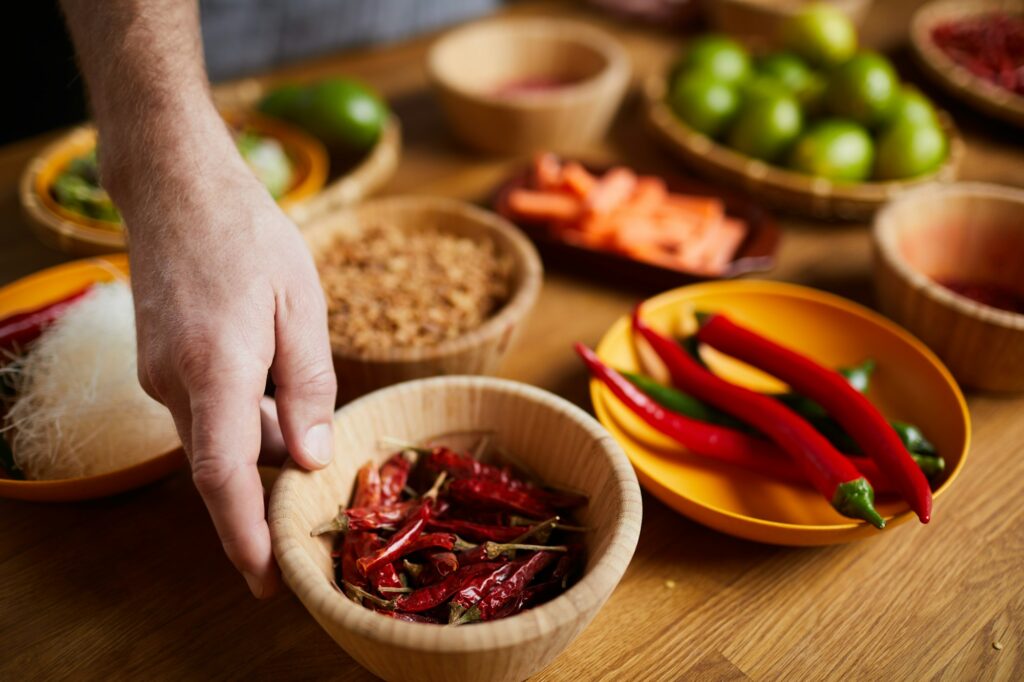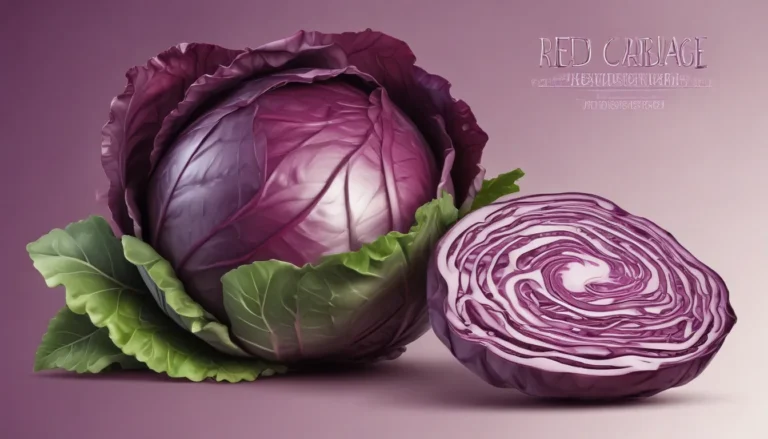The pictures in our articles might not always show exactly what the text is talking about. We use these images to make the article more interesting and eye-catching. They are there to add to the text, but not to replace it or show every detail.
Chili peppers are more than just a fiery addition to your favorite dishes. These small but mighty fruits have a rich history and a wide range of uses that might surprise you. From their humble beginnings in the Americas to their global culinary dominance, chili peppers have carved out a unique place in human culture and cuisine.
Imagine biting into a jalapeño and feeling that familiar burn, or catching the aroma of roasting poblanos. These sensations are just the tip of the iceberg when it comes to the world of chili peppers. Did you know that these spicy marvels have been cultivated for thousands of years? Or that they played a crucial role in the development of traditional medicines across various cultures?
In this blog post, we'll embark on a flavorful journey through 19 fascinating facts about chili peppers that will spice up your knowledge and maybe even inspire you to add more of these versatile peppers to your diet. From their botanical classification to their unexpected uses in wildlife conservation, we'll cover a wide range of topics that showcase the incredible diversity and importance of chili peppers.

The Basics of Chili Peppers
- Origin Story: Chili peppers originated in the Americas, specifically in Central and South America. They've been cultivated for thousands of years, with evidence of their use dating back to 7,500 BC in Mexico.
- Botanical Classification: Despite being commonly referred to as vegetables, chili peppers are fruits. They belong to the genus Capsicum, which is part of the nightshade family, Solanaceae.
- Diversity of Varieties: There are thousands of different chili pepper varieties, each with its unique flavor profile and heat level. This diversity makes chili peppers an exciting ingredient for culinary experimentation.
- The Spice Factor: The compound responsible for the heat in chili peppers is called capsaicin. It's this substance that gives peppers their characteristic burn and is also used in various medical applications.
- Measuring Heat: The heat of chili peppers is measured using the Scoville Scale. This scale ranges from 0 Scoville Heat Units (SHU) for bell peppers to over 2 million SHU for the hottest peppers like the Carolina Reaper.
Historical and Cultural Significance
- Ancient Uses: Chili peppers have been used in traditional medicine for centuries. They were believed to help with various conditions, including pain relief, digestive issues, and congestion.
- Global Spread: Chili peppers were introduced to the rest of the world through European exploration in the 15th and 16th centuries. They quickly became popular in many cuisines, especially in Asia.
- Culinary Staple: Today, chili peppers are an essential ingredient in many world cuisines, from Mexican and Thai to Indian and Sichuan. They add not just heat but also depth of flavor to dishes.

Nutritional and Health Benefits
- Vitamin C Powerhouse: Chili peppers are incredibly rich in vitamin C. In fact, they contain more vitamin C than oranges by weight.
- Metabolism Booster: Capsaicin has been found to increase metabolism, which may aid in weight loss efforts when combined with a healthy diet and exercise.
- Pain Relief: Topical creams containing capsaicin are used to relieve pain associated with conditions like arthritis and neuropathy.
- Heart Health: Some studies suggest that regular consumption of chili peppers may be associated with a lower risk of cardiovascular diseases.
Interesting Uses Beyond Cooking
- Natural Pest Control: The strong scent of chili peppers can act as a natural deterrent for garden pests, making them a useful tool for organic gardening.
- Elephant Repellent: In some parts of Africa and Asia, farmers use chili peppers to protect their crops from elephants. The strong smell and taste deter elephants from raiding crops.
- Self-Defense: Capsaicin is the main ingredient in pepper spray, which is used as a non-lethal self-defense tool.
Fun Facts and Trivia
- Bird-Friendly Spice: Birds are immune to the effects of capsaicin, which is why they can eat even the hottest peppers without discomfort.
- Space Peppers: In 2021, NASA astronauts successfully grew chili peppers on the International Space Station, marking a milestone in space agriculture.
- World Records: The current holder of the "World's Hottest Chili Pepper" title is Pepper X, with a scorching 2.69 million Scoville Heat Units.
- Chili Eating Contests: Competitive chili pepper eating has become a popular event in many parts of the world, with contestants vying to eat the hottest peppers or the most peppers in a given time.
Frequently Asked Questions
Q: Are all chili peppers equally spicy?
A: No, chili peppers vary greatly in spiciness. The Scoville scale is used to measure their heat levels, ranging from mild bell peppers to extremely hot varieties like the Carolina Reaper.
Q: Can eating chili peppers help with weight loss?
A: While not a magic solution, chili peppers can aid in weight loss efforts. The capsaicin in peppers can boost metabolism and may help suppress appetite.
Q: Are there any health risks associated with eating chili peppers?
A: For most people, eating chili peppers is safe. However, consuming extremely spicy peppers or large quantities can cause discomfort, including stomach pain and heartburn. It's always best to start with milder varieties and gradually increase heat levels.
Q: How can I reduce the heat when eating spicy foods?
A: Dairy products like milk or yogurt can help neutralize the burn from capsaicin. Other options include eating bread or rice, which can absorb some of the heat.
Q: Can chili peppers be used for purposes other than cooking?
A: Yes! Chili peppers have various uses beyond the kitchen. They're used in traditional medicine, as natural pest control in gardens, and even in self-defense products like pepper spray.
In conclusion, chili peppers are much more than just a spicy ingredient. Their rich history, diverse varieties, and numerous health benefits make them a fascinating subject of study. Whether you're a culinary enthusiast, a gardener, or simply someone interested in natural remedies, chili peppers have something to offer. So the next time you add a dash of heat to your meal, remember that you're partaking in a tradition that spans thousands of years and crosses cultures worldwide. Embrace the heat, and enjoy the complex world of chili peppers!






